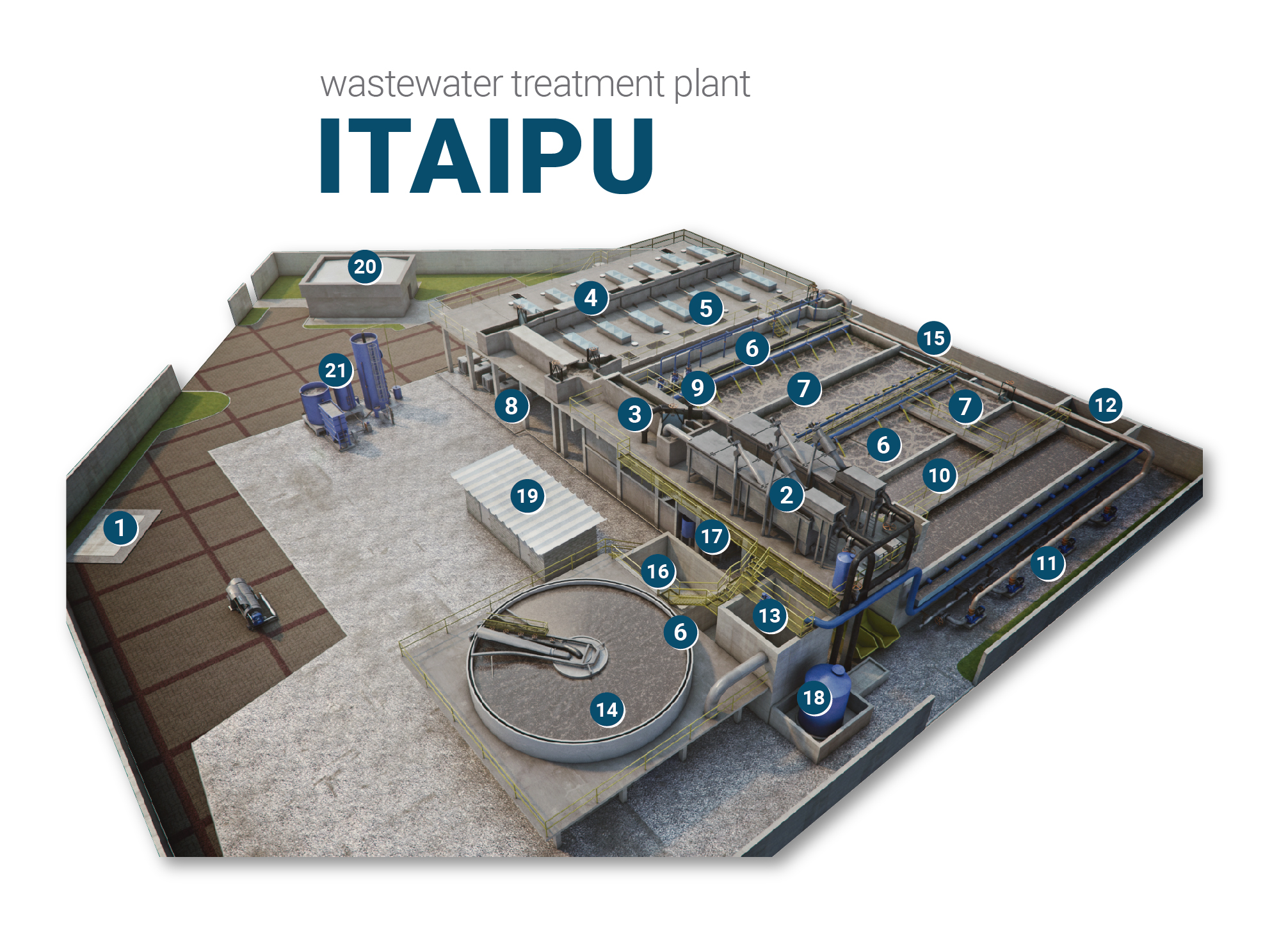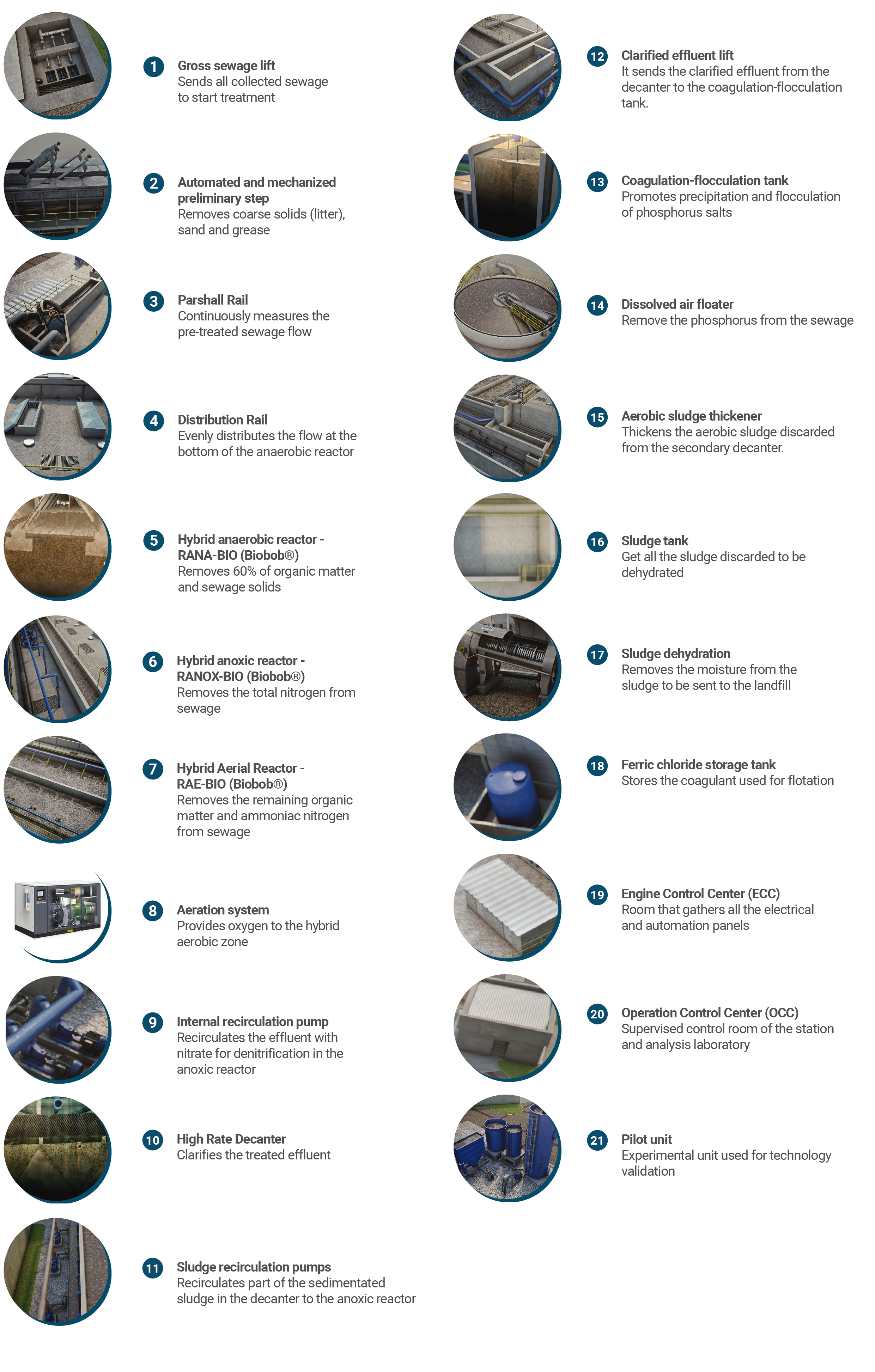CASES
Credibility achieved with partnerships.
We are proud of our history and, specially, of the people who make and took part in it. Check it out through our cases and confirm the success we have achieved together with our customers in 10 years.

UPGRADE AND RETROFITTING OF WWTP - ITAIPU WWTP
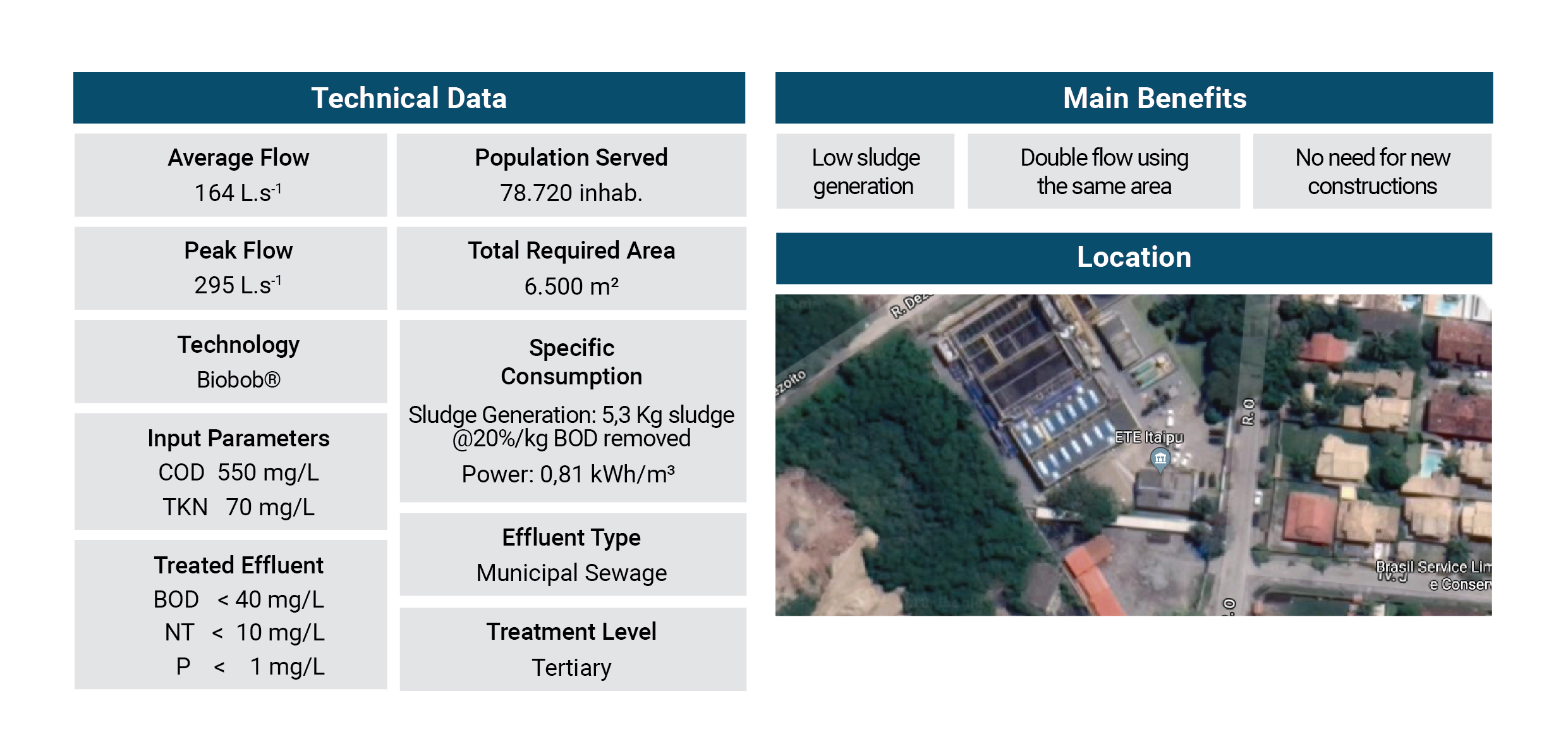
OBJECTIVE
Implanted in the city of Niterói-RJ in 2005 and composed by manual preliminary treatment, UASB, anoxic reactor, IFAS (biodisc), secondary decanter and tertiary decanter, the unit was designed for 82 L.s⁻¹ (1st stage) with an expansion planned for 164 L.s⁻¹ (with the construction of the 2nd line) and tertiary level of treatment. As assumptions and guidelines of greater relevance to the client, the proposed technical solution for the treatment should contemplate the following:
- Compliance with the current regulations and laws (EDBO > 85%; BOD < 40 mg.L⁻¹ ; SST < 40 mg.L⁻¹ ; N-NH4 < 5 mg N.L⁻¹ ; NT < 10 mg N.L⁻¹ ; P < 1 mg P.L⁻¹ );
- Doubling the treatment capacity (82 L.s⁻¹ to 164 L.s⁻¹ ) with maximum utilization of the existing structure, avoiding new constructions;
- Reduction of costs of implementation of the 2nd stage;
- Reduction of operating costs;
- Process reliability and stability (robustness to load shocks)
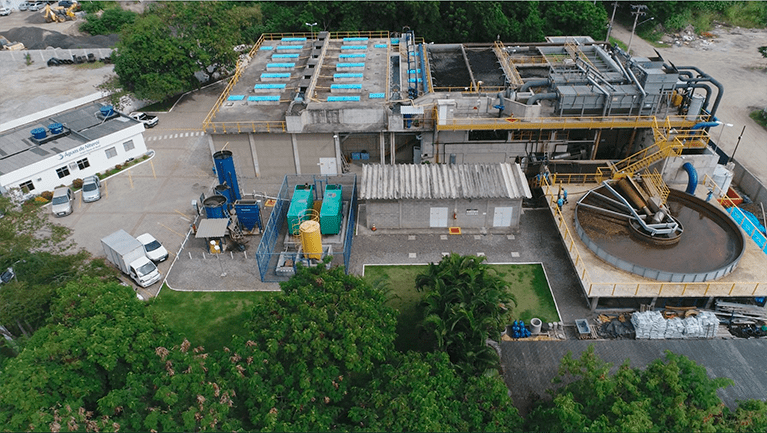
SOLUTION
Thus, in order to achieve full customer satisfaction, BIOPROJ developed the following work plan:
- Conceptual design for the expansion of Itaipu WWTP contemplating the integrated pretreatment system (automated), secondary decanter of high rate, tertiary floater and the application of technology in Biobob® anaerobic reactors (RANA-BIO), anoxic (RANOX-BIO) and aerobic (RAE-BIO);
- Implantation of a pilot unit reproducing (in a scale 200 times smaller) the real WWTP with Biobob® technology for the technical and economic validation of the system;
- Basic and executive project, with the objective of gathering a set of necessary and sufficient elements to characterize and implement the unit, ensuring technical and economic viability from the perspective of: processes, hydraulics, mechanics, electrical, instrumentation, automation and civil issues;
- Follow-up on the execution of the works and unit assembly, including the technical support services, by having on-site a qualified technical team, in order to orient, set interferences and produce necessary detail boards for proper execution / assembly and building;
- Training and qualification of the technical-operational team responsible for the operation and maintenance activities, transferring all the necessary knowledge and experience for the
proper operation of the treatment unit, on a “on the job training” basis, until the client can take over the activities with his own team.
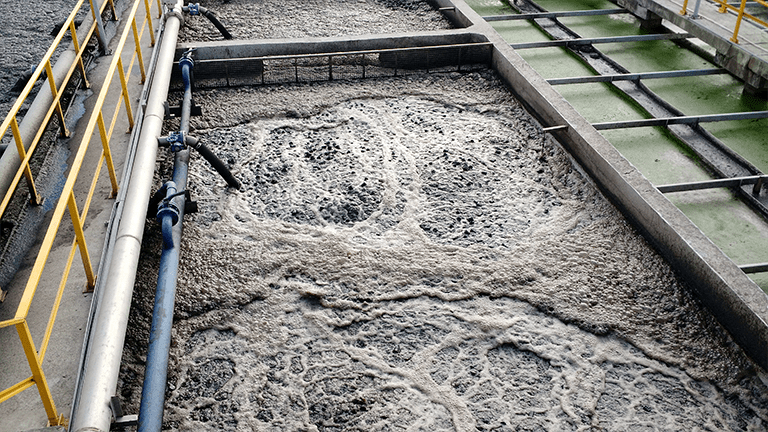
RESULTS
As a final result, the Biobob® technology enabled the duplication of Itaipu WWTP capacity without physical expansions, as well as substantially reducing sludge costs, and increasing operational stability, ensuring the quality of the treated effluent.
In addition, this suitability enabled the implantation of the first hybrid anaerobic reactor in Brazil. The use of special supports for microbial immobilization (Biobob®) in the UASB reactor allowed the duplication of the flow in the same reaction volume, keeping the desired quality of the parameters of the resulting effluent.
It is also worth mentioning that it is difficult to obtain a differentiated final result without a differentiated intermediate process. All BIOPROJ projects are developed in 3D using the BIM concept, which offers numerous advantages, such as interaction between project disciplines, greater speed, understanding, reliability and predictability (cost and schedule), as well as minimization of errors and interferences on the execution of the project.
With all these aspects, BIOPROJ was able to meet the client’s expectations and ensured the success of the ITAIPU WWTP, which has been meeting both the desired final quality of the treated effluent and the operational costs of the project since its start in early 2014.

